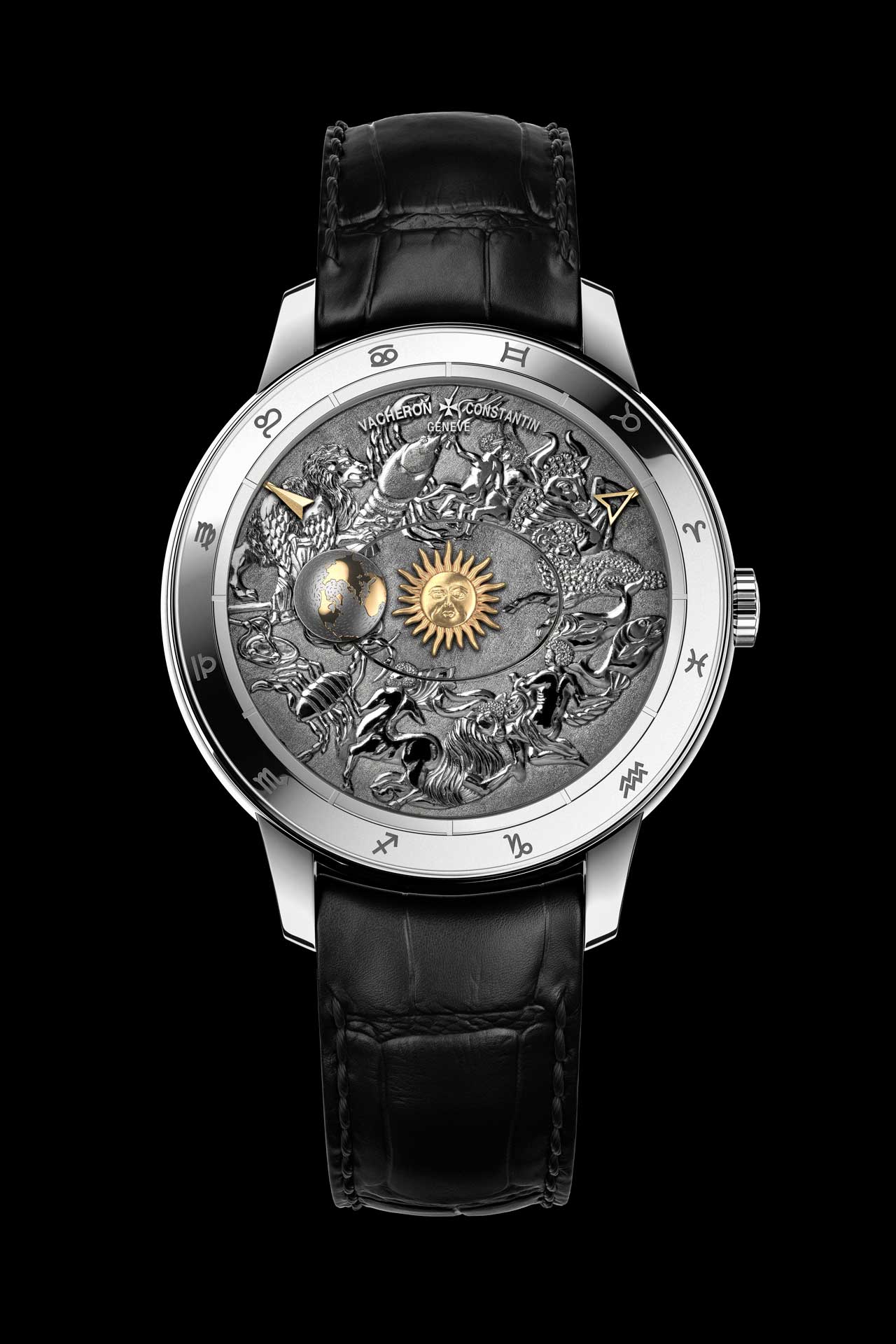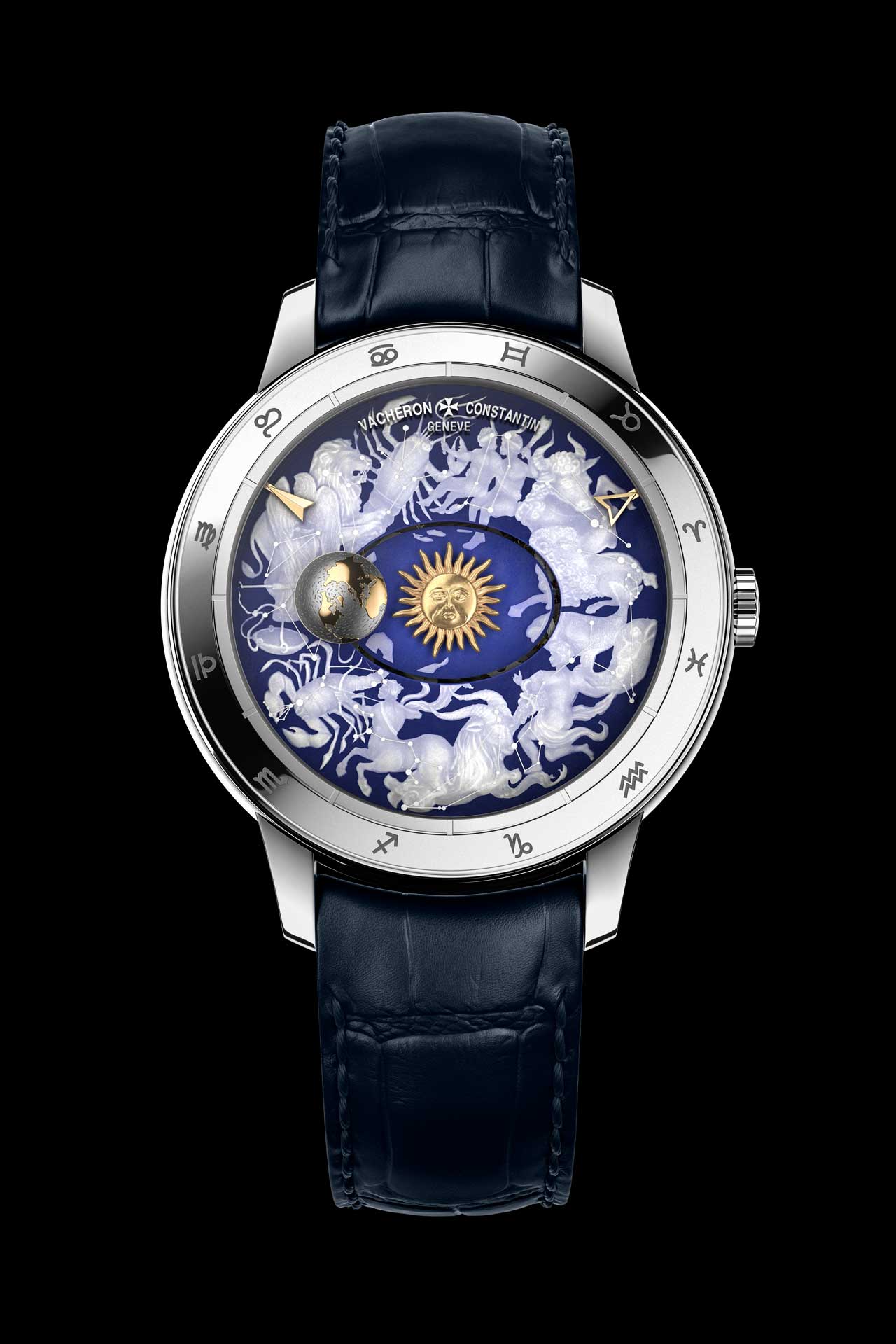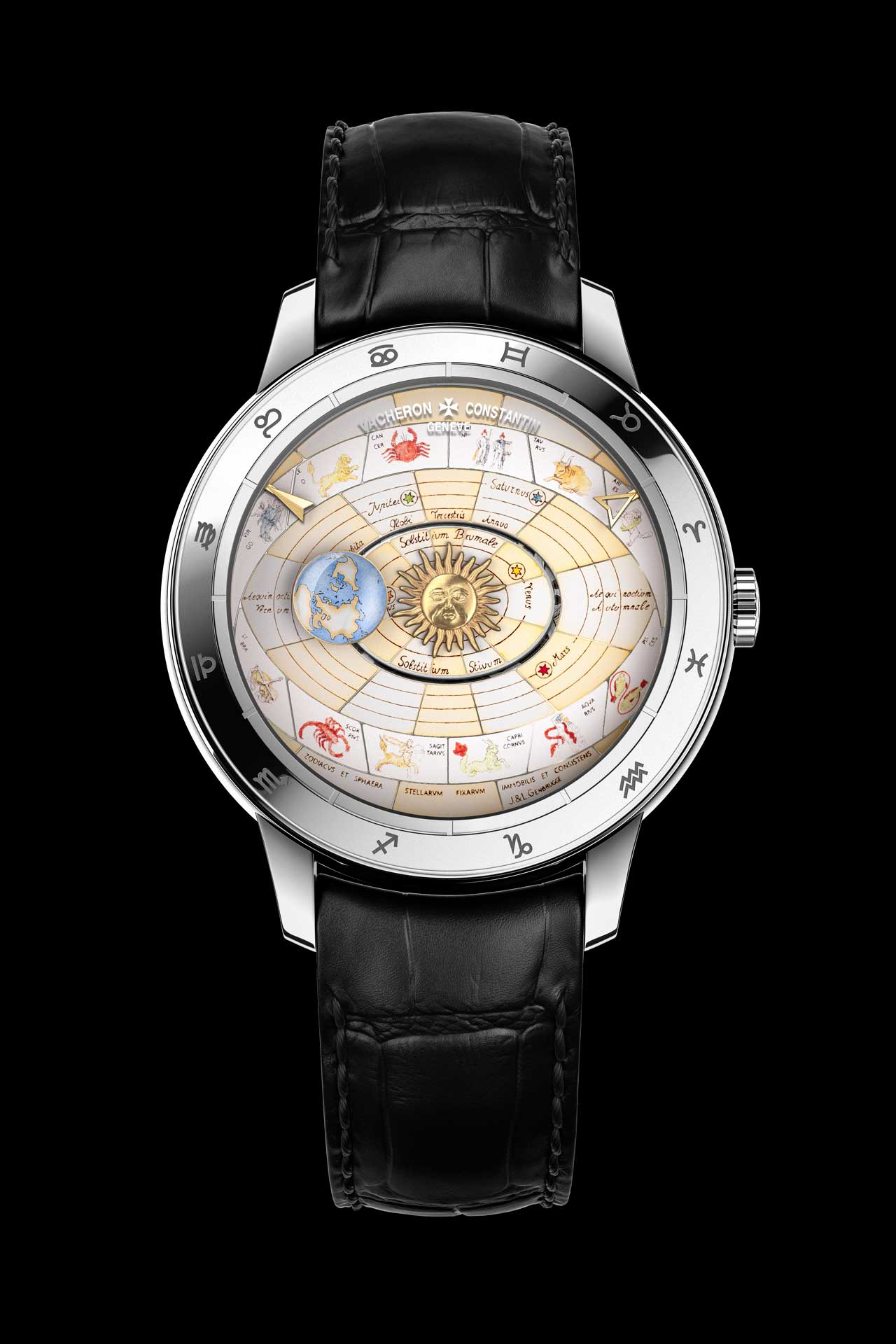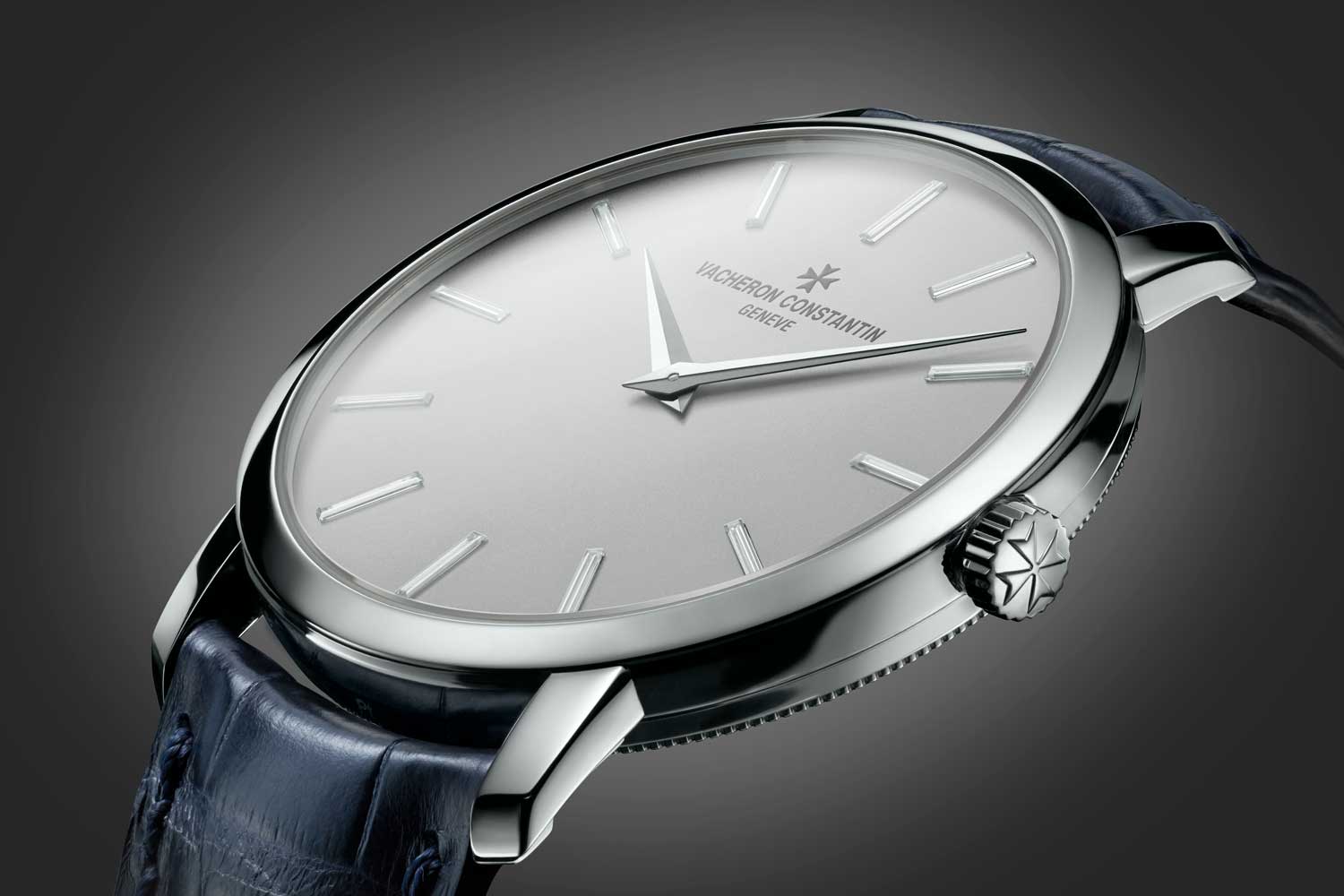Interviews
In Conversation with Louis Ferla, CEO of Vacheron Constantin
Here we are in Paris after the debut of the new Vacheron Constantin Historiques collection at the recently reopened Hôtel de Crillon. Tell us a bit more about these five watches, and how they came together.
Let’s start with the Historiques 1921. All the discussion we had on this watch centred on how we wanted a mid-size model that could respect the DNA of this watch. The original inspiration for the Historiques 1921 was a men’s watch that in terms of wearability could be for anyone with a smaller wrist, whether man or woman. This is what we have achieved with the new model, because everyone who wears it, regardless of gender, says it works for them. The important thing for us was to remain true to the original spirit of the watch and the new mid-size model is exactly that.
When you look at Vacheron Constantin, there are over 260 years of history there. We don’t do short-term commercial strategies that last only six to nine months; we say, “OK, what should we do so that in the next 20 to 30 years Vacheron Constantin will still be recognised as the reference in haute horlogerie”. We build brand equity for our clients in the long run, and in doing this there are a lot of stories we want to tell.
What else is happening at Vacheron Constantin along the same lines?
For example, we are starting to invest heavily in developing Les Cabinotiers, which is our department that focuses on unique pieces ordered by clients. We are making some changes there, in that previously all the Cabinotiers activity was initiated by clients coming to us with their requests. Most of the time, we start from the very beginning, with a blank sheet of paper in front of us, and the whole process usually takes two to three years — sometimes more, because the ref. 57260 took eight years of development.
That works out fine, because some clients like to be fully engaged with the process, they are passionate about haute horlogerie and they are prepared to wait for as long as it takes. However, not everyone is this way; sometimes clients want to buy an amazing unique watch from Vacheron Constantin without having to wait for years.
So what we want to do from now on is to develop around 30 unique watches a year on our own initiative, which we will then present to our clients. We really want to tell more stories about Vacheron Constantin, and developing Les Cabinotiers is central for this. It’s all about engaging more fully and more personally with our clients.
When you talk about telling stories about Vacheron Constantin, what kind of stories do you mean?
At Vacheron Constantin, we have three pillars around which we can really tell stories. There is Les Cabinotiers; the Historiques collection is another one, where we look back through our archives and define what Vacheron Constantin is about. And if we say that Vacheron Constantin is a maison of understated elegance, amazing finishing and certain aesthetic codes, then we can go ahead and look for specific models in our heritage that we can reinterpret in a more contemporary way. This is how we can get our clients to engage with the history of the brand, and really have a conversation about who we are and what we do.
These five Historiques references we just launched are not going to make a huge difference in our business, because they are very limited in quantity. But it has never been a question of volume. It’s very much a question of appeal, desirability, strong client engagement, so that they know our history, they know who we are.
The third pillar is our métiers d’art department. When I joined Vacheron Constantin, everyone told me that Vacheron Constantin is really up there in terms of métiers d’art. I can also see that there are other maisons that are strong here too, so we started asking ourselves how we could differentiate ourselves. And our solution is very uniquely Vacheron Constantin. Instead of doing two to three collections of métiers d’art watches a year, we only do one, to maintain rarity. We will do them in smaller quantities for the same reason. And we will always combine métiers d’art with complications, mixing two areas in which we have incredible legitimacy. It creates extremely strong value for our clients.
A good example of this would be the Métiers d’Art Copernicus Celestial Spheres trio of watches we presented at the recent Salon International de la Haute Horlogerie (SIHH). We are a maison for connoisseurs, for people who know very clearly what they want, so the volume we produce at should reflect this, and our pricing has to be fair. And I’m happy to say that this is the response we have been receiving about the price points of the new Historiques collection. The steel Historiques Triple Calendar 1942 at EUR 19,000 including tax? — everyone is telling us that it is a very good value proposal.



Recently you appointed Christian Selmoni, who was previously Artistic Director, as Heritage and Style Director, which is a role that did not exist in Vacheron Constantin before. Tell us more about this decision, and the internal reorganisation that led to it.
Christian has 27 years of experience with Vacheron Constantin, so for us he is like a living record of the brand. For us to leverage his know-how and knowledge, appointing him a guardian of the style and heritage aspects of Vacheron Constantin is a strong factor to ensure that what we do is consistent with who we are. He is the best person, the most qualified, to do this. Overall, it’s the perfect intersection of what he knows, what he likes to do, what he is good at, and what we want to do. In 260 years of Vacheron Constantin, what is amazing is that we are constantly surprising and innovating while remaining true to who we are.
What is key is to have an offer that is easy for our clients to understand from the creative and product standpoint. Remember that if you are a client of Vacheron Constantin, you will likely be a connoisseur, you know that if you come to Vacheron Constantin you will get amazing finishing, attention to design, good quality, that’s the basic expectation.
What goes on top of that is an explanation of where the inspiration for a watch comes from, the link between a watch and the patrimony of Vacheron Costantin, how this watch is relevant today — a full 360° approach, in other words. That’s why we’re making these little reviews and changes to our internal organisation to achieve this — to bring clear value and messaging to our clients.
Recently we visited the facilities at Plan-les-Ouates and the Vallée de Joux, which seem to be undergoing some physical changes as well.
What we’re doing is putting more resources in the departments that we want to develop. So we put more in Les Cabinotiers, in our design studio, in digital and in CRM [customer relationship management]. Physically, the changes you see are mostly due to the fact that we used to have a production site in Meyrin as part of the Richemont Campus Genevois de la Haute Horlogerie, and we have recently moved that part back to Plan-les-Ouates. So now we have two sites, Plan-les-Ouates and in the Vallée de Joux, instead of three.
We wanted to be more efficient in terms of internal communication, supply chain, overall agility, because at the end of the day it’s the client that benefits from these internal improvements. And I want to emphasise that this does not mean we have fewer opportunities to find synergies within the Richemont group, not at all — in fact, we are on this more than ever.
I am not convinced that we need to be fully verticalised and do everything ourselves, especially in the case that there is a very good innovation existing in one of our sister brands. Instead of spending five years developing an in-house equivalent, why not make use of a shared asset to benefit the client in half the time?
The comparison I often make is with cars. Even the most expensive cars often share a platform with cars from other brands; you can be sure that the electrical system is not created in-house but by Siemens or another company. It is normal to look for the best innovation available to you and optimise it within your own capacity.
While it’s true that today we are fully Geneva Seal, we make our own movements, encase everything ourselves and so on, I am asking the team to be a little more open to leveraging group synergies. Should we be more alert to ways of bringing the best innovations to our clients? Yes, we should.
While some people may associate Vacheron Constantin with traditional and conservative values, the fact is that Vacheron Constantin was one of the first brands to use online channels to reach out to their community, with The Hour Lounge forums. How is Vacheron Constantin continuing their digital outreach with the new generation of online platforms?
We just launched The Hour Lounge on Instagram, which is an example of how we are developing our digital presence to engage with clients. Very soon, we will include product pricing on our website so you can see everything there is to know when we post updates on new watches. We’re doing this because whenever we communicate about new watches, the first question from clients is always about the cost. And right now we don’t have that information on our website, but we are reacting to our clients’ needs and putting that in place.
I’m not sure we will sell a lot purely through e-commerce, but if you ask me if that channel is important for the client’s decision-making, I think it is. When you are a connoisseur, you search for information, via many different channels, through print, digital, through your friends, you visit the boutiques and in the end, you decide. Whether the payment is made through a boutique or through our online platform is not really the issue.
The importance of being able to touch and feel the actual watch is still very strong to clients of a certain maturity. Just because they have lots of knowledge and are very rational about their purchase doesn’t mean they can’t have feelings about it as well. And it’s much more challenging to duplicate the emotional environment of a boutique digitally. Our online channels are just another way for us to provide that full 360° client engagement that we talked about.
Finally, what is one overlooked aspect of Vacheron Constantin that you think deserves more attention? And what is one thing that you think needs to be worked on?
Definitely Les Cabinotiers needs to be brought forwards a bit more in the conversation about Vacheron Constantin. Who else is capable of doing what we do in this way? Also métiers d’art, because I think that in the new way we plan to present them, combined with complications, there are many beautiful stories to be told there.
For the other part of the question, one of the comments that comes up from time to time is that we talk a lot about our history and not enough about our innovations. So now when I speak about Vacheron Constantin and our traditions, I always try to mention that we are also extremely innovative. After all, that’s why we have been around for so long.
In order to have a history, you have to survive a long time, and you need to innovate in order to sustain a long history. It’s this link between tradition and innovation that we have to reemphasise a bit more. And just because you innovate, just because you surprise people, doesn’t mean that you need to be ostentatious. You can go into the details and put your innovations and surprises there.
The watch I’m wearing, for example, looks very settled and quiet, but look at the movement, look at the dial indices. I can say that if you are not in the know and if you are not a connoisseur, this is not the watch you are going to pick. I have been wearing this watch for a year, and I can guarantee that no one notices the baguette diamonds. But connoisseurs know what to look for, and they know where to look for it.

The watch on Louis Ferla's wrist at the interview: The Traditionnelle in platinum with baguette diamond indexes










